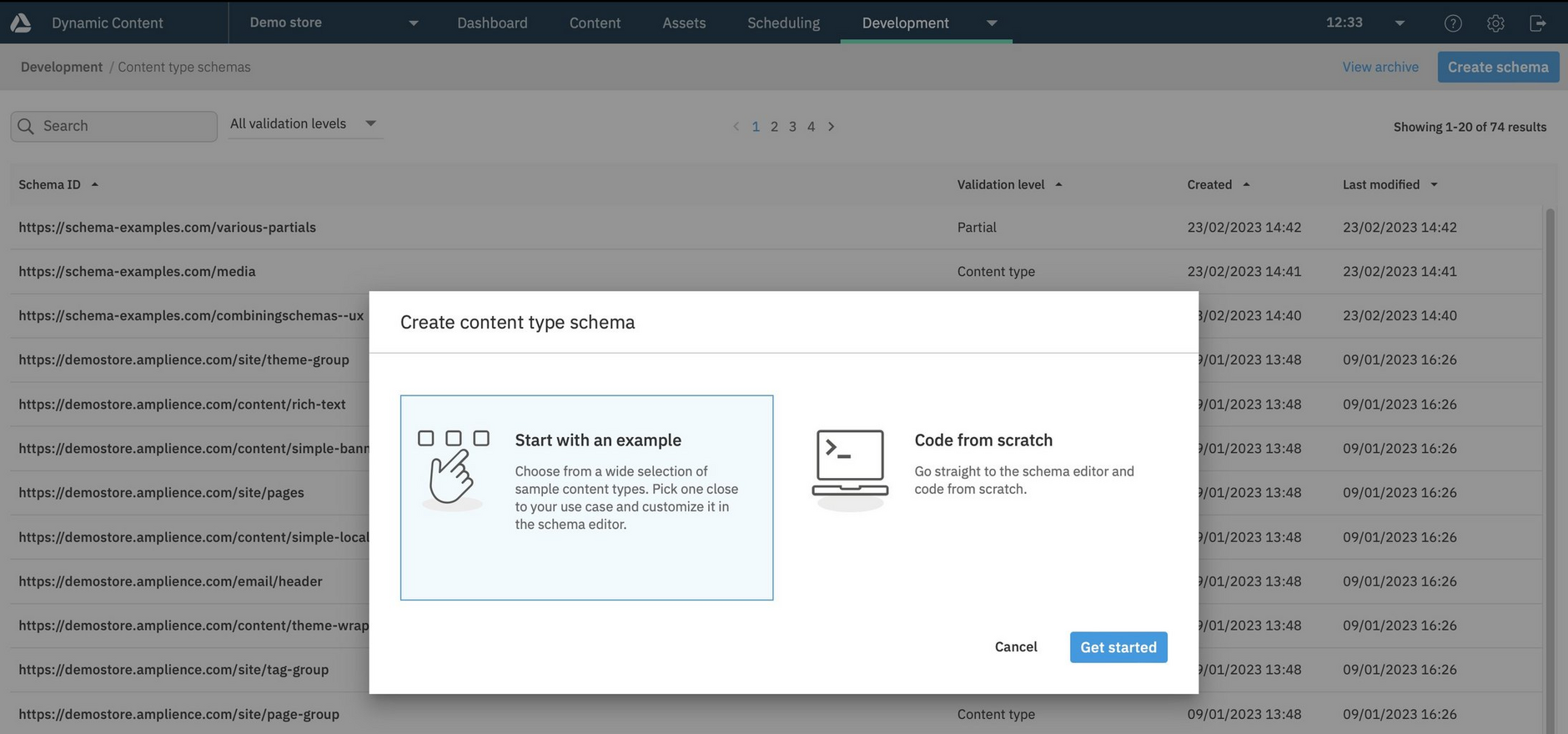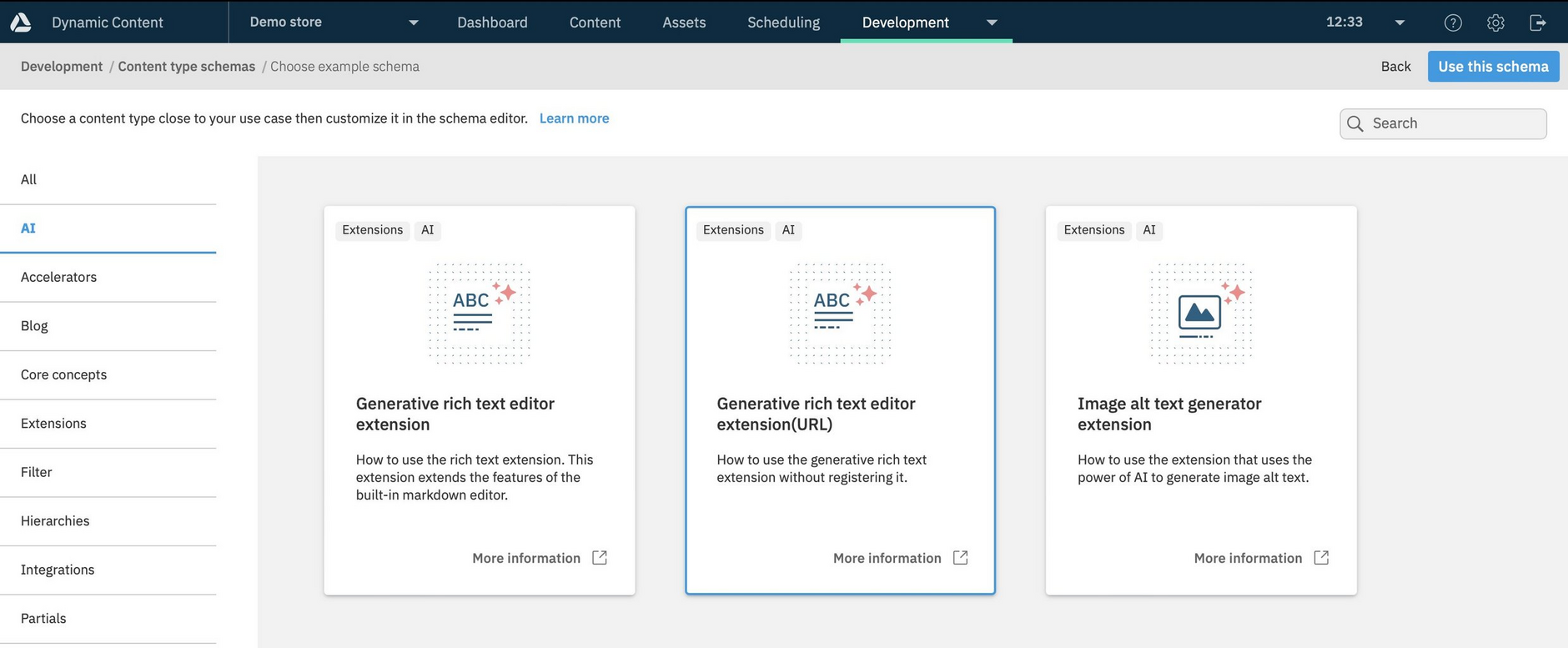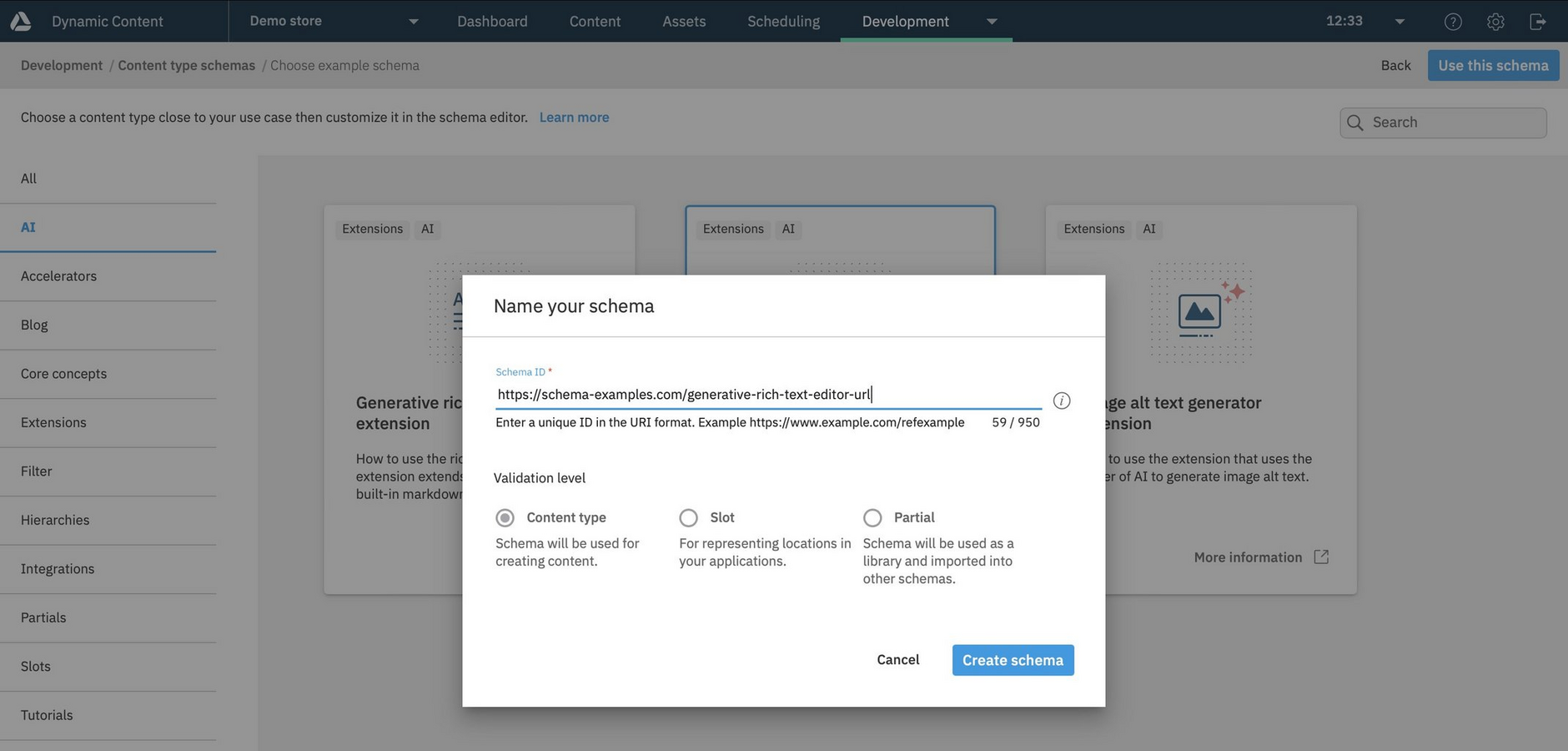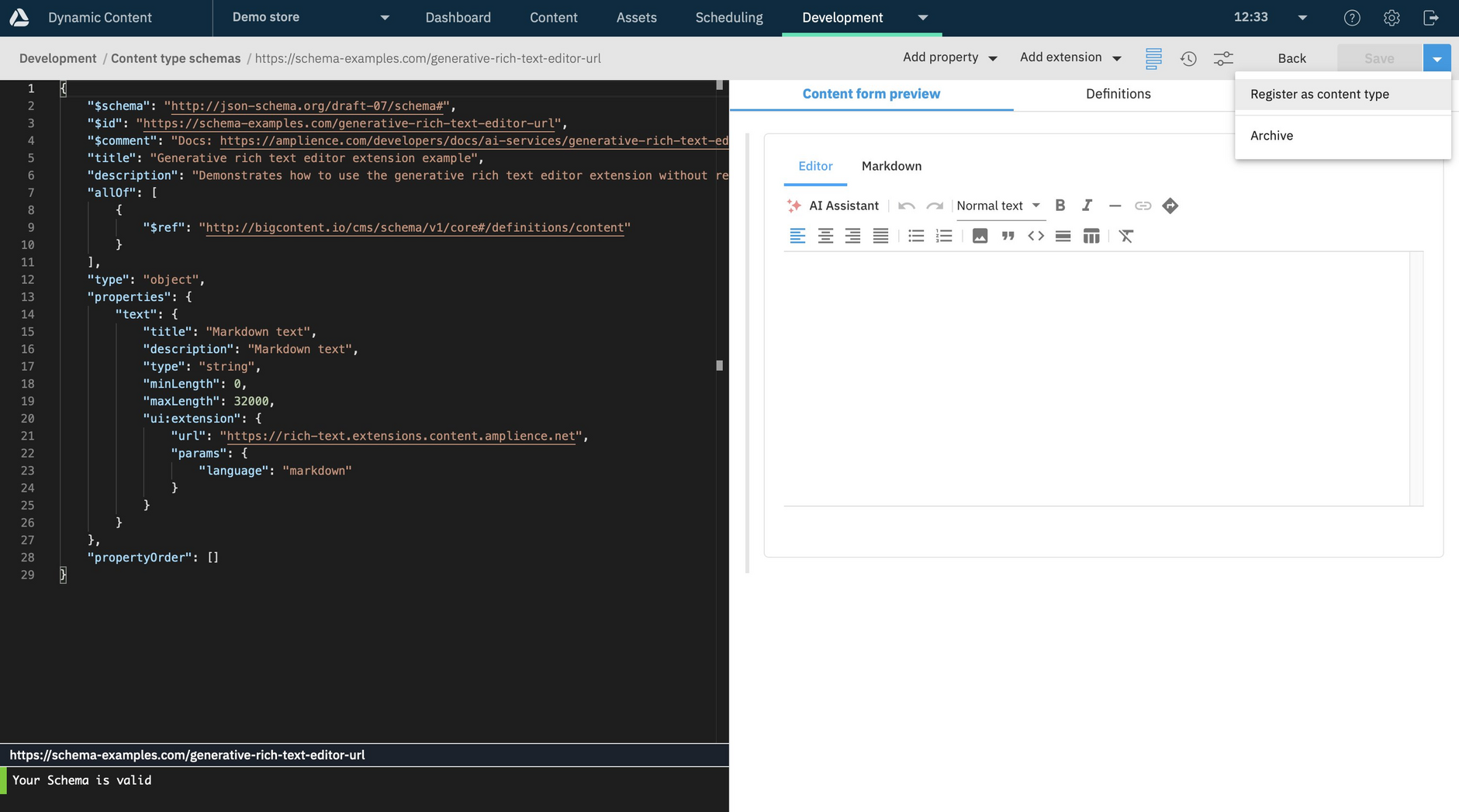Using the schema examples
We've included a set of schema examples to help get you started and to use as the basis for your own content type and slot type schemas. You'll find example schemas covering the core concepts such as numbers, string and localization, how to define slots and the schemas used in our tutorials. Example schemas are also included to show how to use content field extensions (including our AI services), the filter API, hierarchies and the Dynamic Content Salesforce Commerce Cloud integration.
Using the examplesLink copied!
To use one of the schema examples, choose "Content type schemas" from the "Development" menu and click the "Create schema" button.
Choose which schema you want to add to your library and click "Use this schema". In the image below we've chosen the "Generative rich text- URL" example which demonstrates the use of one of our AI services.
Clicking "More information" for any schema example will open up its corresponding documentation page.
The schema will already be configured for you. We recommend that you keep all the details the same because some schemas are designed to work together. Click "Create schema" to add the schema to your library.
The schema editor is opened with the schema you selected. From here you can update and register it.
Register the schema as a content type by choosing "Register" from the schema menu. You can then use the content type to create content.
For more information about registering a content see registering content types.
Core conceptsLink copied!
A collection of schemas that demonstrate some of the key schema concepts.
-
Partials
-
Slots
AcceleratorsLink copied!
A collection of schemas for the Dynamic Content accelerators- content types that you can use in your own projects including banners, sliders, images, text and video.
AI servicesLink copied!
Schemas to make it easy to get started with our AI extensions. We've included schema examples to use registered extensions and to reference the extension using its URL.
BlogLink copied!
Schemas used to implement a blog. These are used as examples in the webhook and search sections.
ExtensionsLink copied!
Schemas demonstrating how to use the maps, rich text, image transformation, localization and date time picker extensions.
FilterLink copied!
Schemas used for the examples on the filter API page.
HierarchiesLink copied!
Schemas used for the examples on the using hierarchies page.
IntegrationsLink copied!
Schemas demonstrating how to use the Dynamic Content Salesforce Commerce Cloud (SFCC) integration.
PartialsLink copied!
Schemas containing definitions that are designed to be included in multiple schemas.
SlotsLink copied!
These schema examples include slots set up to contain content created from some of the other example schemas.
TutorialsLink copied!
Schemas used in some of tutorials and examples.



